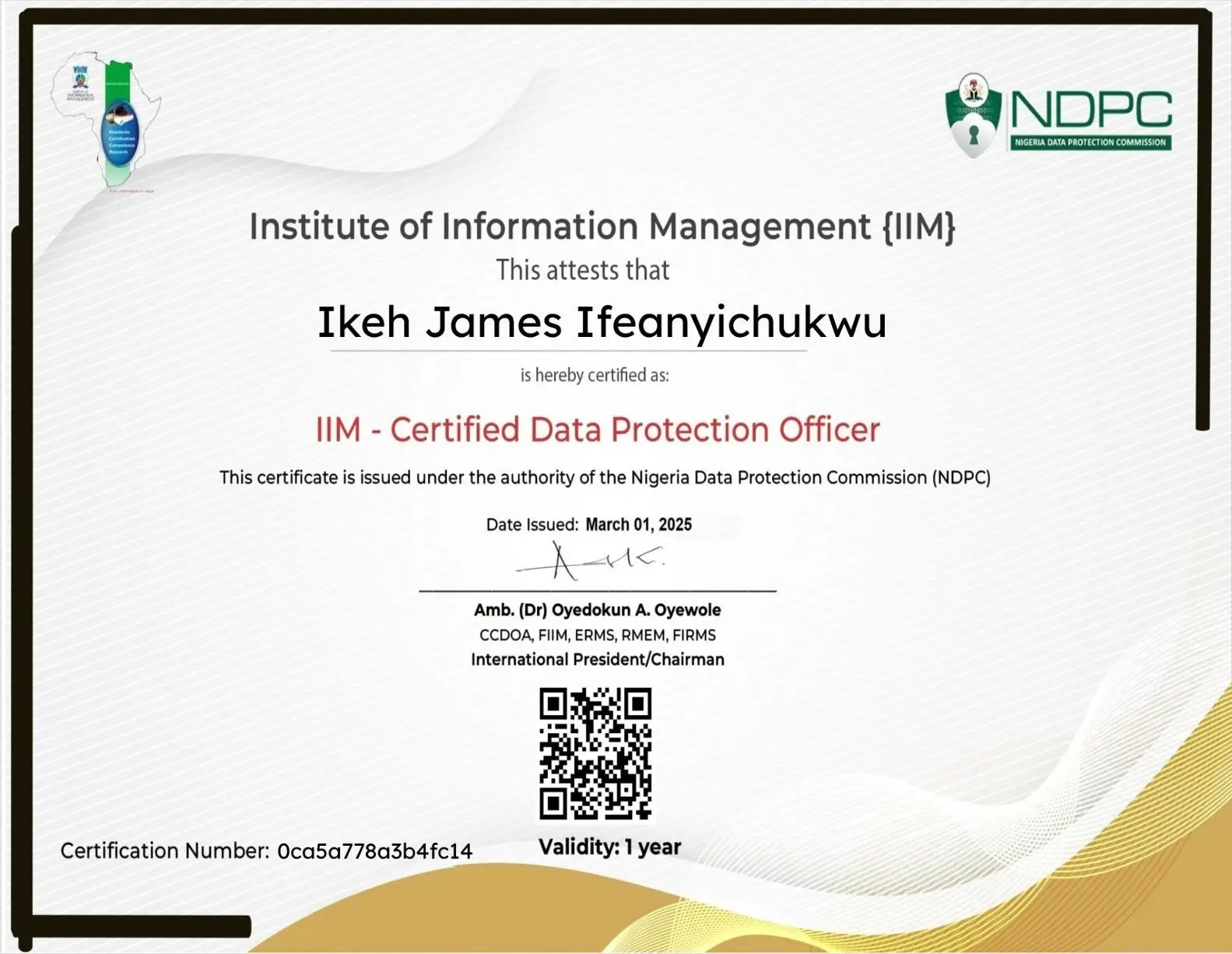What Is Personal Data? Understanding the Core of Data Protection Laws
Share

Introduction
Every time you log in to a website, post on social media, or sign up for an online service, you’re sharing information about yourself. But how much of that information is considered personal data?
In today’s digital economy, personal data has become one of the most valuable—and vulnerable—assets. It powers personalized ads, recommendation engines, and analytics, but it also raises serious questions about privacy, consent, and control.
Understanding what counts as personal data is the foundation of all data protection laws, including the EU’s General Data Protection Regulation (GDPR) and Nigeria’s Data Protection Act (NDPA). This article breaks it all down in simple terms, with real-world examples and expert insights.
What Is Personal Data?
Personal data means any information that relates to an identified or identifiable individual—also known as a data subject.
According to Article 4(1) of the GDPR, personal data is:
“Any information relating to an identified or identifiable natural person.”
This includes both direct identifiers (like your name or ID number) and indirect identifiers (like your location or IP address) that can be used to trace your identity.
Common Examples of Personal Data
| Category | Examples |
|---|---|
| Basic Identifiers | Name, phone number, email address, home address |
| Government Identifiers | Passport number, national ID, driver’s license |
| Online Identifiers | IP address, cookies, device IDs, usernames |
| Financial Data | Bank account details, credit card number |
| Biometric Data | Fingerprints, facial recognition, voice patterns |
| Health Data | Medical records, genetic information |
| Behavioral Data | Browsing habits, purchase history, app usage |
| Location Data | GPS coordinates, check-in history |
Even anonymized or pseudonymized data can become personal if it can be linked back to a specific person.
Sensitive (or Special Category) Personal Data
Some personal data is more sensitive and requires stronger protection. Under GDPR and NDPA, special category data includes:
- Race or ethnic origin
- Political opinions
- Religious or philosophical beliefs
- Trade union membership
- Health data
- Sexual orientation
- Biometric or genetic data
Processing this type of data usually requires explicit consent or a clear legal justification.
Personal Data vs Non-Personal Data
| Type | Description | Example |
|---|---|---|
| Personal Data | Can directly or indirectly identify an individual. | Email, IP address, phone number. |
| Non-Personal Data | Cannot identify an individual, even indirectly. | Aggregated statistics (e.g., “40% of users are from Lagos”). |
| Pseudonymized Data | Replaced identifiers with codes but still traceable. | User ID: #A1783 instead of “John Doe.” |
| Anonymized Data | Stripped of identifiers beyond re-identification. | “User 1 viewed Page A” with no link to identity. |
The distinction is critical: personal data triggers privacy law obligations, while truly anonymized data does not.
Why Personal Data Matters in Data Protection Laws
Personal data sits at the heart of privacy compliance. Data protection laws are built to regulate:
- How personal data is collected and processed.
- Who can access it and under what conditions.
- How individuals can control or delete their data.
These laws exist to protect individuals’ rights and ensure organizations handle personal data responsibly and transparently.
Legal Bases for Processing Personal Data
Under GDPR and NDPA, an organization can only process personal data if it has a lawful basis:
| Legal Basis | Description | Example |
|---|---|---|
| Consent | The individual has freely agreed to the processing. | Subscribing to a newsletter. |
| Contract | Necessary to fulfill an agreement. | Shipping a purchased item. |
| Legal Obligation | Required by law. | Employee tax reporting. |
| Vital Interests | To protect someone’s life or safety. | Emergency medical use. |
| Public Task | In the public interest or official authority. | National census. |
| Legitimate Interests | Needed for a valid purpose balanced with user rights. | Fraud prevention or service analytics. |
Real-Life Example: Why It Matters
Imagine you download a fitness app.
- You provide your name, weight, and age (personal data).
- The app tracks your running route (location data).
- It analyzes your performance (behavioral data).
If the app shares your data with third parties without consent—or stores it insecurely—it could violate data protection laws, leading to heavy fines and loss of trust.
Protecting Personal Data: Best Practices
To stay compliant and safeguard users, organizations should:
- Minimize Data Collection: Only collect what’s necessary for the purpose.
- Obtain Clear Consent: No pre-ticked boxes or vague terms.
- Secure the Data: Encrypt sensitive information and apply access controls.
- Be Transparent: Provide clear privacy notices about how data is used.
- Allow Control: Enable users to access, correct, or delete their data.
- Conduct Regular Audits: Ensure ongoing compliance and accountability.
Emerging Trends and Global Perspectives
- EU (GDPR): The gold standard for personal data regulation.
- Nigeria (NDPA): Strengthening enforcement through the NDPC.
- US: No single federal law, but sector-based regulations like HIPAA and CCPA.
- Asia: Countries like India and Singapore are introducing modernized data protection laws.
Globally, governments are recognizing that personal data protection is key to digital trust and sustainable innovation.
FAQs
Q1. Is my email address personal data?
Yes. It can identify you directly or indirectly.
Q2. What’s the difference between personal and sensitive data?
Sensitive data (like health or race) requires higher protection and explicit consent.
Q3. Can anonymized data be personal data?
Only if it can be re-identified—otherwise, it’s non-personal.
Q4. Who is responsible for protecting personal data?
Both data controllers and processors share legal responsibility.
Q5. What happens if a company mishandles personal data?
They can face heavy fines, reputational damage, and legal consequences.
Conclusion
Personal data is the lifeblood of the digital economy, but it also comes with responsibilities. Knowing what qualifies as personal data—and how to handle it—helps individuals protect their privacy and organizations maintain compliance.
As global data protection laws evolve, one principle remains constant:
Respecting personal data is not just a legal duty—it’s a matter of trust.


























Leave a Reply